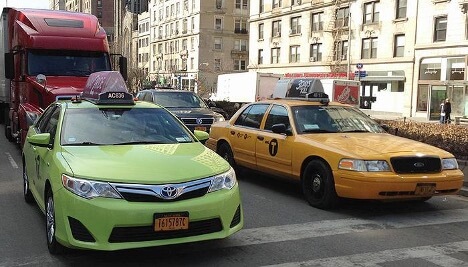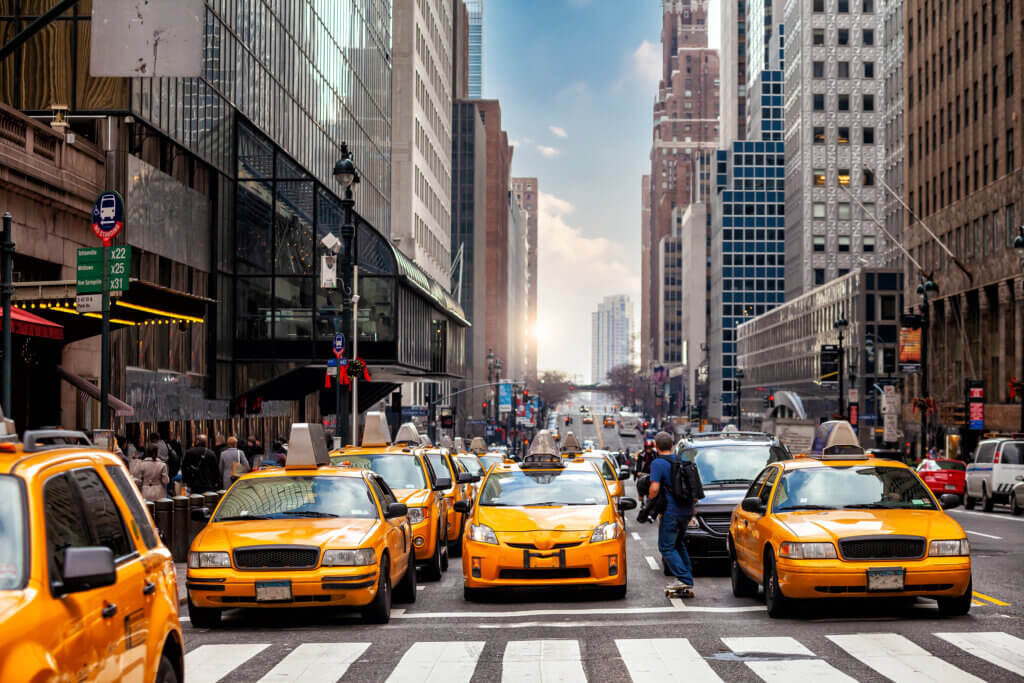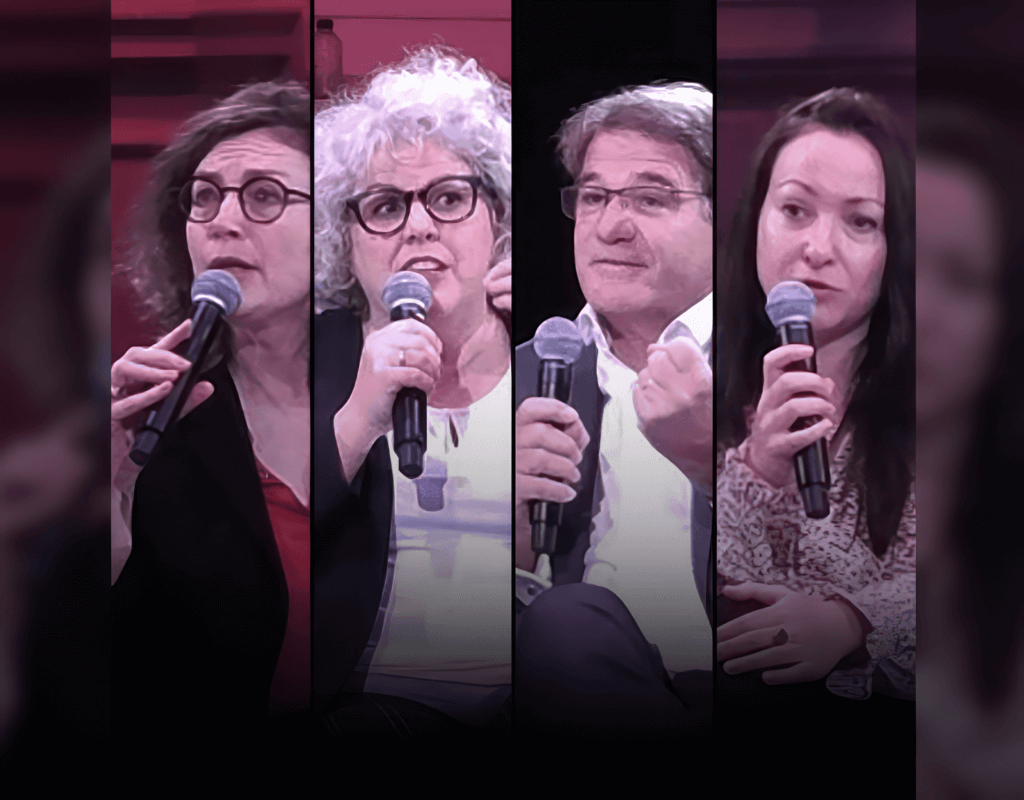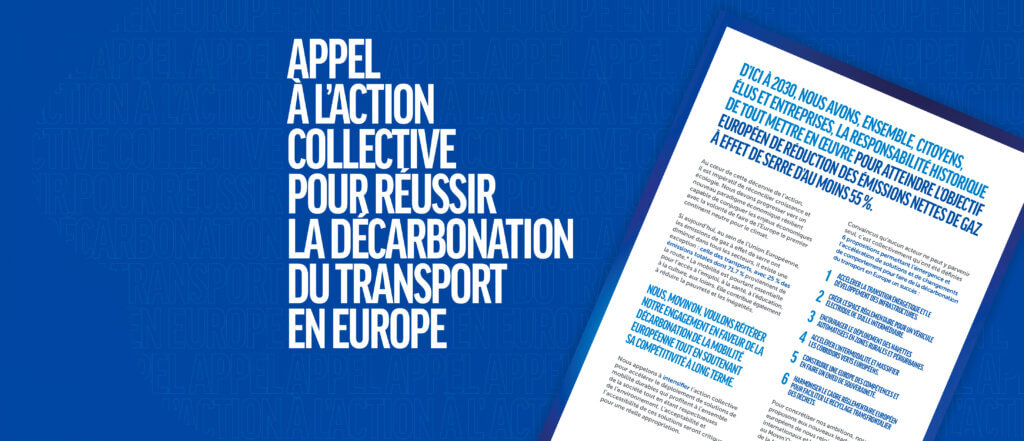Green Rides to Electrify New York City’s Rideshare Fleet
New York City’s entire rideshare fleet must be either zero-emissions or wheelchair accessible by 2030 to comply with the newly proposed rules for Green Rides, a program that aims to electrify the high-volume for-hire vehicle fleet in New York City without imposing new costs on individual drivers.

New York City’s entire rideshare fleet must be either zero-emissions or wheelchair accessible by 2030 to comply with the newly proposed rules for Green Rides, a program that aims to electrify the high-volume for-hire vehicle fleet in New York City without imposing new costs on individual drivers.
New York City Mayor Eric Adams, together with Commissioner David Do who heads the city’s Taxi and Limousine Commission, announced the new Green Rides rules on Wednesday.
“When it comes to driving towards sustainable and inclusive transportation alternatives, New York City isn’t just along for the ride – in fact, we are leading the way,” said the mayor. “By championing the integration of zero-emission vehicles and wheelchair accessible transportation, we are cutting dirty emissions and guaranteeing equitable transportation opportunities for every New Yorker.”
GREEN RIDES MARKS SIGNIFICANT PROGRESS TOWARDS ESTABLISHING AN ENVIRONMENTALLY CONSCIOUS FOR-HIRE TRANSPORTATION SYSTEM SPANNING ALL FIVE BOROUGH. THIS TRANSFORMATIVE SHIFT WILL SERVE AS A TURNING POINT, PROPELLING NEW YORK CITY TOWARDS A GREENER, CLEANER, HEALTHIER FUTURE.”
– Eric Adams, Mayor of New York City
This goal aligns with Uber and Lyft’s commitments to transition to an all-electric fleet by 2030 while continuing to ensure widespread access to wheelchair accessible vehicles, WAVs. Both Uber and Lyft, which together comprise New York City’s high-volume for-hire fleet of approximately 78,000 vehicles, have made this commitment.
“We applaud the TLC’s ambition for reducing emissions, an important goal we share,” said Josh Gold, senior director for public policy and communications, Uber. “While there’s much more to do to make this a reality, we look forward to working with the TLC to achieve zero-emissions in New York City in a way that benefits drivers, riders, and the city.”
“New York has always been a leader on green innovation,” said Larry Gallegos, public policy manager, Lyft. “That’s why we are excited to partner with the city on its ambitious plan to electrify our industry. Through smart, targeted investments in incentives and charging infrastructure, we can help accelerate electric vehicle adoption and build a cleaner and more sustainable New York for all.”
“New York City is the best city in the country for walking or taking public transportation instead of driving, but 83 percent of emissions from transportation still come from private vehicles. Electrifying transportation is key to achieving carbon neutrality,” says the Mayor’s Office of Climate and Environmental Justice (MOCEJ).
According to a Taxi and Limousine Commission study, the agency’s licensed vehicles currently contribute to roughly four percent of the city’s vehicle emissions.
“Green Rides’ bold goal of transitioning to zero-emission or wheelchair accessible vehicles by 2030 helps advance the PlaNYC goal of helping New Yorkers who must drive to drive electric,” said MOCEJ Acting Executive Director Victoria Cerullo. “The Green Rides roadmap takes advantage of unprecedented new incentives for purchasing electric vehicles and will help expand charging infrastructure in the city – proving that TLC is getting sustainability done now.”
The two million light-duty vehicles registered in the city are responsible for roughly 80 percent of the city’s transportation emissions. To help meet NYC’s carbon neutrality goals, 400,000 vehicle owners will need to switch to electric vehicles by 2030, explains the Mayor’s Office of Climate and Environmental Justice.
“As Mayor Adams made clear in his State of the City address, lowering transportation emissions takes bold action. The rules proposed today will make New York City the first large city in the world to have a rideshare fleet in which every vehicle is either zero-emissions or wheelchair accessible,” said Deputy Mayor for Operations Meera Joshi. “TLC’s well-considered proposal is the first step towards mobility that is both convenient and sustainable.”
New York taxicabs are operated by private companies and licensed by the New York City Taxi and Limousine Commission, which also oversees over 40,000 other for-hire vehicles,
TLC Chair David Do wants to see a lot more electric cabs on New York streets. “The most exciting aspect of this initiative is that it not only transforms the existing fleet into one that is cleaner and more accessible but also provides a much-needed boost in development of city’s charging infrastructure. Green Rides will have long-term benefits not just for TLC drivers but every driver in the city seeking to make the shift to an electric vehicle.”
Color Holds the Key
In today’s New York City, taxicabs come in two varieties – yellow and green. Taxis painted yellow, known as medallion taxis, can pick up passengers anywhere in the five boroughs. The apple green taxis, which are called street hail livery vehicles or boro taxis, operate only outside the Manhattan central business district, exluding John F. Kennedy and LaGuardia airports. Both types have the same fare structure.
TLC data shows that, in February 2023, there were 74,404 vehicles for app-based services like Uber and Lyft – a 10 percent increase from one year earlier.
The number of yellow taxi drivers in February grew to 10,762, up nearly 20 percent from the same month last year. But the number of green boro taxis is shrinking, from the peak in June 2015, with 6,539 green taxis on city streets to just 891 green taxis in February 2023, TLC data shows. With Green Rides in place, they will be phased out completely.
The Taxi and Limousine Commission on Wednesday approved a plan to add up to 2,500 for-hire vehicles in the four boroughs and Upper Manhattan. The pilot program will allow up to 2,500 unused street-hail livery permits to be reissued for new-look vehicles that focus exclusively on pre-arranged trips. They can be any color except yellow or green and will have distinctive markings.
But the Taxi Workers Alliance, which represents more than 20,000 drivers of green and yellow taxis and app-based ride-hailing services, slammed the proposal, saying New York does not need more for-hire vehicles when ridership is still below pre-pandemic levels, especially after the city this year already approved 1,000 new licenses to drivers of electric for-hire vehicles.
“Electric vehicle adoption is a crucial piece of reducing New York City’s emissions. We are working closely with the private sector to equitably increase public charging access and inspire greater adoption and sustainable mode shifts across industries,” said New York City Department of Transportation Commissioner Ydanis Rodriguez.
Precision Marks New Green Rides Rules
The proposed rules provide a roadmap for achieving the bold goals of Green Rides over the next six years, with yearly benchmarks that the city says are “practical, implementable, and designed to ensure a smooth and efficient transition.”
Starting in 2024, the city will require five percent of all high-volume for-hire trips, including those with Uber and Lyft, to be dispatched to zero-emission vehicles or wheelchair accessible vehicles – with that benchmark rising to 15 percent in 2025 and 25 percent in 2026.
As the market evolves and electric vehicle prices become more affordable, the requirements will increase yearly by 20 percentage points until the end of the decade, when requirements reach 100 percent in 2030.
This transition will play a major role in advancing PlaNYC, New York City’s long-term strategic climate plan that highlights efforts the city is taking to protect New Yorkers from climate threats, improve quality of life, and build the green economy. In the plan, the Adams Administration lays out actions the city is taking to achieve its goal to cut transportation emissions in half by 2030.
Along with Green Rides, the city is working as part of PlaNYC to ensure that every New Yorker lives within 2.5 miles of an electric vehicle charging station by 2035 and electrify school buses and the city’s fleet, while pursuing legislative changes to require that private parking garages and lots make electric vehicle charging available.
So far, riders like the new Green Rides plan. “As part of New York’s all-of-the-above strategy to mitigate climate change, the city’s Green Rides initiative is an important complement to fast, frequent, reliable, and accessible public transit service,” said Betsy Plum, executive director, Riders Alliance. “Electrifying the high-volume for-hire fleet while making the most of our subways, buses, and paratransit will help expedite our transition to a zero-emission transportation system.”
Existing federal and state incentives are expected to encourage purchases of electric vehicles and drive the market towards price parity between zero-emission vehicles and internal combustion engine vehicles by 2027.
Additionally, state regulations dictate that all new passenger cars, pickup trucks, and SUVs sold in the state to be zero-emission by 2035. These financial and legal forces, along with a proven demand for TLC vehicle licenses, will help rideshare drivers shift towards cleaner and more sustainable transportation options.
New York City’s local elected officials generally support the new Green Rides plan as an antidote to climate change.
“The climate disasters we’ve seen this summer alone are an urgent call to action for all of us to do more to protect our environment. Electrifying the vehicles crisscrossing New York is essential to the sustainable city we need to build,” said Brooklyn Borough President Antonio Reynoso.
“As global temperatures continue to reach record highs and the number of weather-related disasters continues to proliferate, it’s clearer than ever we must leave no stone unturned in addressing climate change,” said Queens Borough President Donovan Richards Jr. “The policy set forth today is a big step forward in the effort to reduce the production of greenhouse gases that contribute to global warming. This work, however, must be done in close communication and coordination with Queens residents who drive for-hire vehicles to make ends meet. I look forward to working with the mayor’s office and the TLC to ensure that happens.”
“As chair of the New York City Council’s Committee on Environmental Protection, Resiliency & Waterfronts, I am thrilled to share my excitement about the Green Rides initiative.”
“THIS POLICY SETS A GOLD STANDARD FOR INNOVATION, PAVING THE WAY FOR OTHER CITIES ACROSS THE COUNTRY TO FOLLOW SUIT. BY STEERING OUR HIGH-VOLUME FOR-HIRE FLEET TOWARDS ZERO EMISSIONS, WE NOT ONLY REDEFINE URBAN MOBILITY, BUT ALSO REAFFIRM OUR COMMITMENT TO A GREENER, MORE SUSTAINABLE NEW YORK CITY.”
– James Gennaro, New York City Councilmember
Chris Velez, TLC-licensee EV driver and owner, feels good about the change from an internal combustion engine vehicle. “I love the EV. We save so much money on gas,” he said. “Passengers love that it is very quiet, and I get a lot of compliments. I hope the TLC releases more EV plates.”
Public comments are welcome at: https://rules.cityofnewyork.us/rule/green-rides-initiative/ through September 19. A public hearing on the proposed Green Rides rules is scheduled for September 20, 2023.
Toute l’actualité de Movin’On
dans votre boîte mail
Auteur
Partager
Tweets de @movinonconnect
Movin'On 2035 TODAY EP02 - Circular Economy & Competitivity
Movin’On 2035 TODAY EP01 – Fair Mobility for All https://x.com/i/broadcasts/1yNxagBrWZbGj
✨ THAT'S A WRAP!
Movin'On Summit 2024 has just concluded in Brussels!
More than 350 leaders and experts in sustainable mobility gathered to exchange ideas, collaborate, and share their vision for desirable and decarbonised mobility in Europe. Together, we explored ways to build…
🔴 Live from #MovinOnSummit2024
@AshaSumputh has just invited Denis Machuel, CEO at @AdeccoGroup and Florent Menegaux, President of the @Michelin Group & President of Movin'On
L’actualité de la mobilité durable
Découvrez les dernières tendances, des analyses thématiques et nos prochains rendez-vous






